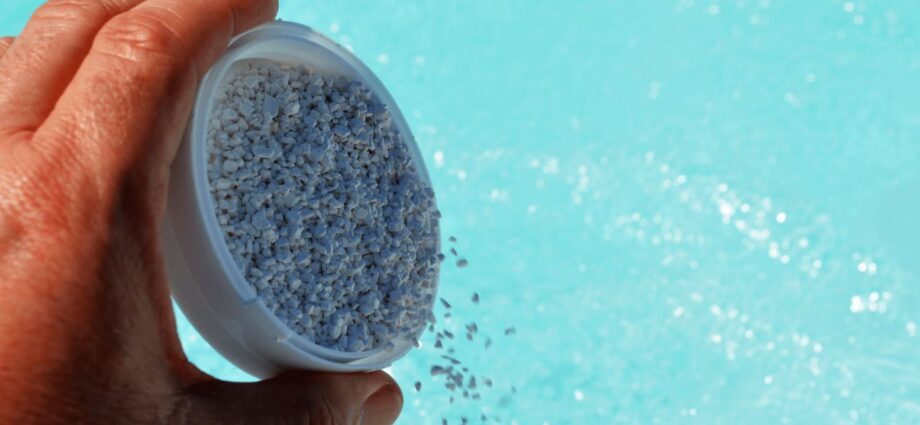Maintaining a sparkling, clear, and safe swimming pool goes beyond regular cleaning and filtration. One of the key maintenance practices pool owners must regularly undertake is shocking the pool. Pool shocking involves adding a large dose of chlorine or other chemicals to the water to eliminate contaminants and ensure that the water remains safe for swimming. This blog will provide you with an in-depth guide on how to properly shock your pool and ensure you’re doing it effectively.
What Does It Mean to Shock Your Pool?
Pool shocking refers to the process of significantly raising the chlorine levels in the pool to break down organic contaminants, kill bacteria, and oxidize the water. Over time, the chlorine in your pool gets “used up” by reacting with oils, sweat, dirt, and other pollutants. Once chlorine binds to these contaminants, it forms chloramines, which are ineffective for sanitizing the pool and cause that familiar “chlorine smell.” Pool shocking helps get rid of chloramines and restore the pool’s chlorine levels to ensure the water is clean and safe.
In addition to dealing with chloramines, pool shocking also helps prevent or address algae growth and keeps the water clear, particularly after heavy use or after the pool has been exposed to rain, debris, or other factors that can introduce contaminants.
When Should You Shock Your Pool?
Regularly shocking your pool is an essential part of maintaining its cleanliness, but how often should you do it? While every pool is different and usage patterns vary, there are a few key instances when shocking the pool is especially important:
1. Routine Shocking
For most pools, it’s recommended to shock the pool weekly or bi-weekly during peak swimming season when usage is high. Even if the water appears clean, shocking ensures that any invisible contaminants are dealt with before they become a bigger issue.
2. Post-Event Shocking
If you’ve had a pool party or a large number of swimmers using the pool, it’s best to shock the pool afterward. Heavy swimmer usage introduces more oils, sunscreen, sweat, and dirt into the water, which can rapidly use up chlorine and lead to water quality issues.
3. After Rainstorms or Heavy Debris
Rain can bring dirt, bacteria, and debris into your pool, disrupting the water’s chemistry. If your pool has been exposed to rainstorms or large amounts of debris, shocking helps reset the chlorine levels and clear the water.
4. Visible Signs of Trouble
If your pool water starts looking cloudy, has a strong chlorine smell, or algae is forming, it’s a sign the chlorine levels are too low to keep up with the contaminants. Shocking the pool is necessary to restore balance.
Preparing Your Pool for Shocking
Properly preparing your pool before shocking is crucial to the effectiveness of the treatment. Here are the steps you should follow to ensure optimal results:
1. Test the Water Chemistry
Before shocking the pool, test the water’s chemistry to check the pH, alkalinity, and chlorine levels. Ideally, the pH should be between 7.2 and 7.6 for the shock to be most effective. If the pH is too high or too low, the shock won’t work as well, and you might need to adjust the pH levels before proceeding.
2. Clean the Pool
Remove any debris or dirt from the pool. This step is important because organic matter in the water can consume the chlorine in the shock treatment, reducing its effectiveness. Use a pool cleaner to vacuum the floor and walls of the pool, and skim any floating debris. This step ensures that the chlorine from the shock is used to sanitize the water rather than breaking down dirt.
3. Turn on the Pool Filter
Ensure your pool’s filtration system is running before you add the shock to the water. The circulation will help distribute the shock evenly throughout the pool, making it more effective.
How to Shock Your Pool
Once your pool is prepared and your water chemistry is balanced, you’re ready to shock the pool. Follow these steps for an effective shock treatment:
- Choose the Right Amount of Shock: The amount of shock you need depends on your pool size and the type of shock you’re using. Follow the instructions on the product packaging to determine the correct dosage for your pool’s volume.
- Pre-Dissolve Shock (If Necessary): Some shock treatments, particularly granular ones like Cal-Hypo, require pre-dissolving in a bucket of water before adding to the pool. Follow the product instructions carefully.
- Add Shock to the Pool: Slowly pour the shock mixture around the perimeter of the pool, avoiding adding it all in one spot. This ensures an even distribution of chlorine throughout the water.
- Run the Pool Filter: Let the pool filter run for at least 6 to 8 hours after shocking. This helps circulate the shock and fully sanitize the water.
Maintaining a Clean Pool Post-Shock
After shocking, it’s important to maintain the cleanliness of the pool to prevent future issues. Continue using your best pool cleaner to vacuum debris and brush the walls to prevent algae buildup. Regularly test the water chemistry and ensure that the pH and chlorine levels remain balanced for optimal pool health.
Conclusion
Shocking your pool is a vital part of maintaining clear, safe water that’s free from contaminants and algae. By regularly shocking your pool, especially after heavy usage or poor weather conditions, you can ensure that your water stays balanced and enjoyable. Remember to follow the preparation steps carefully, choose the right shock for your pool, and maintain proper filtration to get the best results.

